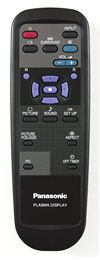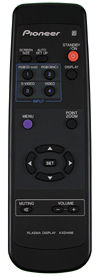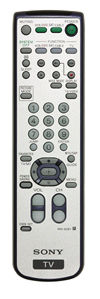A Real-World Plasma Face Off Page 3

Almost everyone had good things to say about the TH-42PWD5 display, which makes it the Face Off's default winner. As Geoffrey pointed out, "The Panasonic certainly had the best black level." Nearly everyone else's notes, including my own, echoed this sentiment. Plasma's black level has always been one of its drawbacks. Panasonic, however, has managed to create an image with deep, dark shadows without losing low-level details. Despite a peak-white measurement of only 18 foot-lamberts, which ranked third overall, the display seemed to have good contrast. This is partially due to the excellent black level, which makes the peak whites seem brighter.
 Maureen liked both the Panasonic and Pioneer displays. "The Panasonic really did a nice job with red images and fleshtones." This display produced vibrant, natural colors, even though it wasn't rated as one of the best in this category. However, the Panasonic's (and most of the other 480p panels') low resolution distracted Maureen more than the rest of us. Both Geoffrey and Adrienne rated it as their number-one pick, and Maureen and I ranked it in the top two or three. Adrienne summed it up nicely: "Unlike several of the higher-end displays, the Panasonic performed consistently well with every source we tried and had an excellent black level. I thought its colors and detail were good, too. While the NEC 42MP4 and Sony plasmas looked as detailed with DVD material, I preferred the Panasonic's slightly darker picture because I felt it had more depth and dimension."
Maureen liked both the Panasonic and Pioneer displays. "The Panasonic really did a nice job with red images and fleshtones." This display produced vibrant, natural colors, even though it wasn't rated as one of the best in this category. However, the Panasonic's (and most of the other 480p panels') low resolution distracted Maureen more than the rest of us. Both Geoffrey and Adrienne rated it as their number-one pick, and Maureen and I ranked it in the top two or three. Adrienne summed it up nicely: "Unlike several of the higher-end displays, the Panasonic performed consistently well with every source we tried and had an excellent black level. I thought its colors and detail were good, too. While the NEC 42MP4 and Sony plasmas looked as detailed with DVD material, I preferred the Panasonic's slightly darker picture because I felt it had more depth and dimension."
TH-42PWD5 ED Monitor $4,995
Panasonic Consumer Electronics
(800) 211-PANA
www.panasonic.com
Dealer Locator Code PAN
HIGHLIGHTS
Panasonic:
• Excellent black level and perceived contrast
• Decent price

Pioneer

Consistency factored largely in the Pioneer model's favor, as well. Maureen thought the PDP-433CMX was "consistently the best—the word consistently being key here." This panel is one of the commercial models, so it's not really aimed at consumers. The Pioneer display was also one of two that had a 1,024:768, HD-compatible native resolution. This helped give the image a more detailed, defined look than the other displays, something that Maureen preferred. Adrienne agreed that "the Pioneer's color was pleasing," but she didn't feel that good color and detail made up for the display's poor black level. Compared with the other plasmas, the Pioneer's black level was more gray, which robbed the image of depth and may have contributed to my impression that it wasn't as detailed as the NEC MP Series.
 Geoffrey and I, however, were impressed by the display's near-total lack of contouring artifacts. This was presumably due to the panel's 10-bit video processor. Granted, we only found this to be true when we used the RGB input, but it goes to show you what plasma is capable of. Contouring can give images a stepped look, as the processor can't create enough transitions between bright and dark images to render a smooth appearance. In addition, these transitions tend to have a great deal of video noise or snow, which can make the picture look somewhat grainy. With the Pioneer, images had smooth, gradual transitions between luminance levels and exhibited little, if any, video noise. This, combined with the display's upgradeable input card, made the Pioneer Geoffrey's second-place pick. While several of the plasmas have upgradeable input boards, the Pioneer's more-universal slot allows it to accommodate a bevy of aftermarket, third-party products that provide improved scaling and digital input capabilities, so it's less likely that the Pioneer will become obsolete. Hmm, what a concept.
Geoffrey and I, however, were impressed by the display's near-total lack of contouring artifacts. This was presumably due to the panel's 10-bit video processor. Granted, we only found this to be true when we used the RGB input, but it goes to show you what plasma is capable of. Contouring can give images a stepped look, as the processor can't create enough transitions between bright and dark images to render a smooth appearance. In addition, these transitions tend to have a great deal of video noise or snow, which can make the picture look somewhat grainy. With the Pioneer, images had smooth, gradual transitions between luminance levels and exhibited little, if any, video noise. This, combined with the display's upgradeable input card, made the Pioneer Geoffrey's second-place pick. While several of the plasmas have upgradeable input boards, the Pioneer's more-universal slot allows it to accommodate a bevy of aftermarket, third-party products that provide improved scaling and digital input capabilities, so it's less likely that the Pioneer will become obsolete. Hmm, what a concept.
PDP-433CMX HD Monitor $9,995
PDA5002 Input Card $400
Pioneer Electronics
(800) PIONEER
www.pioneerelectronics.com
Dealer Locator Code PIO
HIGHLIGHTS
Pioneer:
• Enough resolution for HDTV sources
• Upgradeable card slot means you never have to say you're sorry

Sony

The KE-42TS2 garnered few comments from our peanut gallery. This is likely due to the fact that the display neither excelled at nor failed miserably on any of our tests. The Sony picture's best attributes are likely its resolution and brightness. The panel matches the Hitachi display's 1,024:1024i pixel array, which understandably causes the image to appear more defined than those of the ED panels but not as sharp as those of the HD displays. The Sony technically had the highest light output of any of the panels; surprisingly, this didn't affect anyone's judgment. This may have been due, in part, to the display's black level. While the black level wasn't as high as that of the Pioneer model, it wasn't as dark as some of the others. The resulting contrast, therefore, didn't seem as great as it did on some of the other panels.
 The picture had good color fidelity, courtesy of an accurate color decoder and a reasonably well-adjusted gray scale. Another interesting and undesirable attribute was the display's tendency to retain images. This was particularly true with the onscreen menu, which you could see, albeit faintly, long after the menu had gone away. Overall, the KE-42TS2 is a competent display with no real exceptional or detrimental traits.
The picture had good color fidelity, courtesy of an accurate color decoder and a reasonably well-adjusted gray scale. Another interesting and undesirable attribute was the display's tendency to retain images. This was particularly true with the onscreen menu, which you could see, albeit faintly, long after the menu had gone away. Overall, the KE-42TS2 is a competent display with no real exceptional or detrimental traits.
KE-42TS2 HD Monitor $6,999
Sony Electronics
(800) 222-SONY
www.sony.com
Dealer Locator Code SNY
HIGHLIGHTS
Sony:
• Resolution matches with 1080i sources
• Good color fidelity

Zenith

The Zenith plasma had one thing going for it: a great-looking bezel. Everyone more or less agreed with Geoffrey's opinion that "the P42W22B is the best-looking plasma, aesthetically." The silver bezel and rounded base look stunning and make the panel attractive even when it's turned off. Unfortunately, this was the only positive comment the Zenith plasma received from our panel of judges.
 In general, the display was just too blue. The picture could definitely benefit from a proper technician-performed color calibration. The user menu offers simple color controls (red, green, and blue) but no preset color-temperature setting. While it's possible to improve the picture using these individual controls, it still seems overly washed out and somewhat inconsistent from bright to dark. It's possible that this characteristic is particular to our sample or to Zenith's commercial line, as Jason, Geoffrey, and I have had good experiences with previous Zenith displays, including their 61-inch consumer plasma. This model, however, lacked significant punch or contrast. The black level was OK, but the peak-white light output was extremely low, even with the contrast control set to maximum. The display did get brighter after about 10 minutes, but it still wasn't as bright as the other plasmas. It's not uncommon for manufacturers to tint an image blue to make it appear brighter.
In general, the display was just too blue. The picture could definitely benefit from a proper technician-performed color calibration. The user menu offers simple color controls (red, green, and blue) but no preset color-temperature setting. While it's possible to improve the picture using these individual controls, it still seems overly washed out and somewhat inconsistent from bright to dark. It's possible that this characteristic is particular to our sample or to Zenith's commercial line, as Jason, Geoffrey, and I have had good experiences with previous Zenith displays, including their 61-inch consumer plasma. This model, however, lacked significant punch or contrast. The black level was OK, but the peak-white light output was extremely low, even with the contrast control set to maximum. The display did get brighter after about 10 minutes, but it still wasn't as bright as the other plasmas. It's not uncommon for manufacturers to tint an image blue to make it appear brighter.
P42W22B ED Monitor $6,499
Zenith Electronics
(847) 391-7000
www.zenith.com
Dealer Locator Code ZEN
HIGHLIGHTS
Zenith:
• Attractive silver cabinet

Conclusion
I never liked plasma technology before this Face Off. From the beginning, I've felt that the technology was inherently flawed and that it compromised performance for the sake of saving space. I'm beginning to think otherwise, though. Several of the plasma panels in the Face Off had exceptional qualities that, if combined together, would create an exceptional display. Take the Pioneer's outstanding black-to-white transitions, the NEC MP Series' level of detail, the Panasonic's dark black level, the Sony's peak-white level, the Zenith's bezel, and the Gateway's price, and you'd have an awesome display. Of course, life is never that easy. Products are never perfect, so you'll have to weigh the various displays' advantages for yourself. In the end, you should find, as we did, a panel that fits your needs.
* Special thanks to Jason Koehler and Vantage Technology Consulting Group, www.vantagetcg.com.
- Log in or register to post comments














































